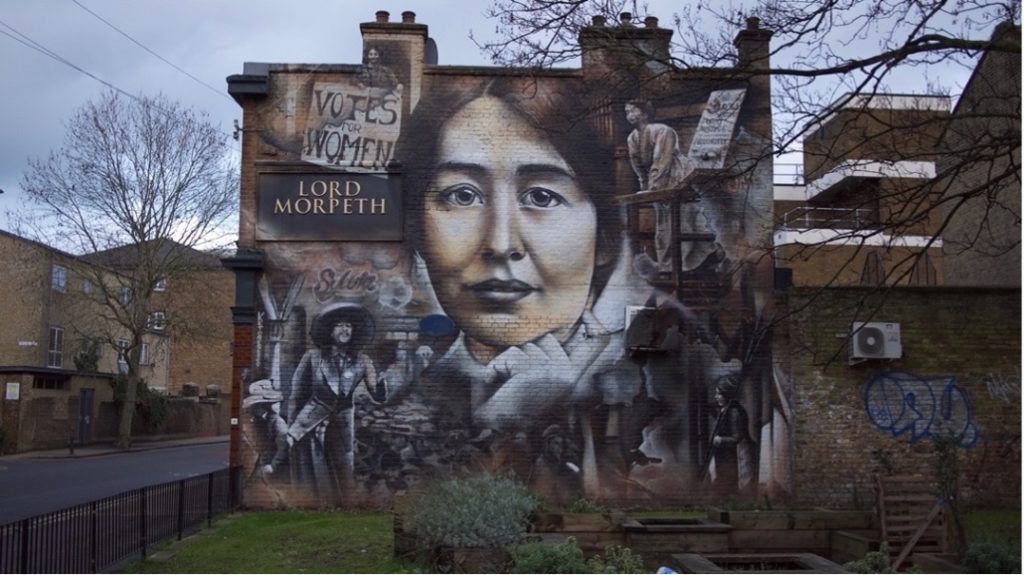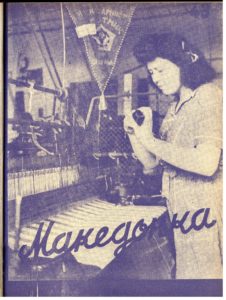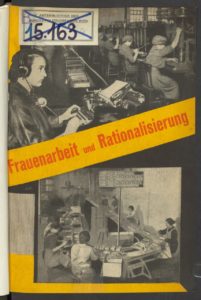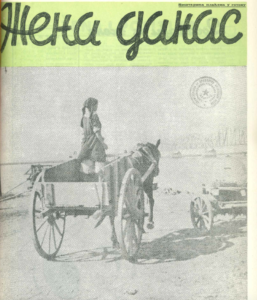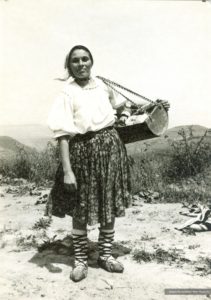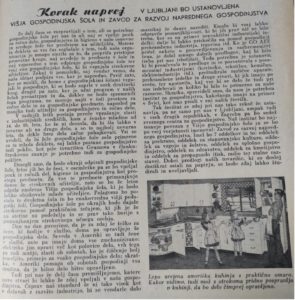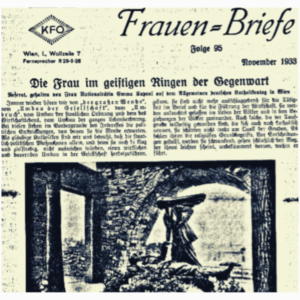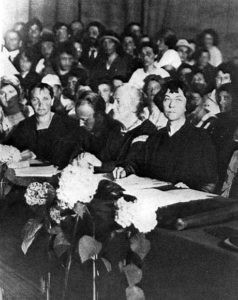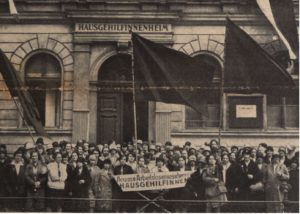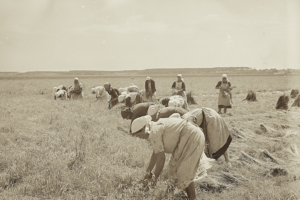by Clara Vlessing
Born on 5 May 1882 in Old Trafford, Manchester, to Dr Richard Marsden Pankhurst (1834–1898) and Emmeline Pankhurst (née Goulden) (1858–1928), Estelle Sylvia Pankhurst (known as ‘Sylvia Pankhurst’) would go on to live a life defined by a seemingly never-ending succession of social movements. Her many political campaigns brought together struggles for women’s emancipation, workers’ rights and anti-imperialism—all underpinned by deep-rooted anti-militarism and opposition to capitalism. She was involved in the British suffragette movement, broke from that movement and shifted towards communism, became engaged with global anti-fascism and supported struggles against British and Italian imperialism in Ethiopia. By the time of her death in 1960, after some sixty years of varied activism, Pankhurst’s political career provoked questions of definition for her supporters: was she best remembered as a feminist or as a socialist, as an anti-imperialist or an anti-racist? Considering this question, the blog post looks specifically at the intersection between issues of gender and class in Pankhurst’s activism and in the ways in which she was remembered by subsequent movements. It draws from my wider research on Pankhurst, along with other contemporary women revolutionaries, in which I demonstrate the vital role of later social movements in securing their legacies.
Sylvia Pankhurst grew up in an environment heavily inflected by left-wing politics. Her parents were both members of the Independent Labour Party (ILP), formed in 1893 as a response to the Liberal Party’s reluctance to endorse working-class candidates; her father stood unsuccessfully for parliament on two occasions. The Pankhurst’s home was a meeting place for prominent activists, radicals and political exiles of various stripes.[1] In 1903 her mother set up the Women’s Social and Political Union (WSPU), later known as the “suffragettes”: a militant faction of the British campaign for women’s right to vote. Pankhurst was an essential part of the WSPU from the start and acted as the organization’s first honorary secretary. She was a trained artist and designed the WSPU’s logo, and made banners, pamphlets and brooches, which were gifted to those suffragettes who survived imprisonment.[2] In 1911 she wrote the movement’s first official history, The Suffragette. The History of the Women’s Militant Suffrage Movement 1905-1910, eulogizing it as “amongst the great reform movements of the world.”[3]
However, unlike those members of the WSPU who devoted themselves entirely to the cause of women’s suffrage, Pankhurst remained consistently interested in other facets of left-wing politics and was apprehensive that working women did not have a place in the movement.[4] During the early years of the WSPU, she led several campaigns involving women in London’s East End and remained an active member of the ILP. Different accounts of Sylvia’s life provide different motivations and timelines for her split from the WSPU.[5] These range from the more personal (suggestions of jealousy of her sister Christabel (1880–1958) who led the WSPU, for example) to the politico-ideological: opposition to the WSPU’s increasingly violent tactics; concerns about the organization’s authoritarian structure and gradual movement to the political right; opposition to the WSPU’s militaristic stance. She was a determined socialist and fought against her mother and Christabel’s notions that all women’s interests were best represented by bourgeois women. Whatever combination of these factors was at play, by 1913 Pankhurst had created an essentially independent working-class base for the WSPU in the East End of London and was eventually dismissed from the organization in January 1914.
Now estranged from her family, Pankhurst set up the East London Federation of Suffragettes (ELFS) and continued to agitate for both women’s and workers’ rights. The ELFS campaigned for an end to the war and also looked after the welfare of working mothers and their children. It was widely active in the local area, setting up a toy factory in an effort to provide well-paid work for local women, instituting a crèche (called “The Mother’s Arms”) and a cost-price restaurant: offering cheap and nutritious food to all. Pankhurst became a great supporter of the 1917 Bolshevik Revolution and later travelled around Continental Europe meeting left-wing leaders, including a visit to Moscow in 1920—at some personal risk—to meet with Lenin. Although she was a founding member of the Communist Party of Great Britain (CPGB), she was expelled from it soon after for her refusal to tow the party line in the paper she printed and edited, which was first titled The Woman’s Dreadnought and later The Workers’ Dreadnought. In 1924 she left the East End and moved to Woodford Green in Essex with her partner Silvio Corio, an Italian anarchist. Here she continued writing for a range of campaigns, including protests against Mussolini and fascism in Italy. In later life, Pankhurst’s involvement in anti-fascism and anti-imperialism led her to champion Ethiopian independence, first from Italian forces and later from British intervention. She spent the last years of her life in Addis Ababa. On her death, she was given a state funeral and pronounced an “honorary Ethiopian” by Emperor Haile Selassie.[6]
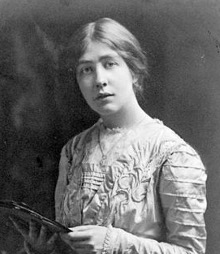
Since her death, Pankhurst’s life and politics have been recalled with different emphases, depending on whether those remembering her see her opposition to gender-based oppression as an aspect of her socialism, or consider her opposition to class-based oppression as an aspect of her feminism. Early accounts of her life tended to place her in the context of her famous family, often relating her expulsion from the WSPU in terms of in-fighting rather than being driven by political convictions.[7] In these accounts, her involvement in labour politics takes a back seat. But in the past fifty years, Pankhurst’s reputation has been affected by wider patterns in feminism.[8] Because of the way in which her beliefs intertwined issues of class and gender, she has served as an example for left-wing feminist historians.
While her biographers were often critical of some of her decisions – on her disagreements with the CPGB, for instance, Mary Davis laments Pankhurst took a “sectarian course” at a “critical juncture”[9] – they more often deemed her “an intellectual foremother of today’s socialist feminists” or an “icon for socialist feminists.”[10] As Pankhurst’s reputation as a role model to left-wing feminists became set, so too did an understanding of her political activity as effectively grassroots and impressively prescient. Since the 1980s there have been few negative recollections of Pankhurst, suggesting that those with a negative stake in her representation have had little interest in furthering her remembrance.[11]
More recently—against a backdrop in which, as Nancy Fraser suggests, “feminist interest in political economy is fast reviving”[12]—there has been something of a revival of public interest in Pankhurst in the UK. The 2018 celebrations of the centenary of the Representation of the People Act, in which for the first time some British women were granted the right to vote, marked the start of a flurry of fresh attention to the Pankhurst family and Sylvia Pankhurst in particular. In a lecture to celebrate the centenary, Rachel Holmes, Pankhurst’s latest biographer, spoke about Sylvia Pankhurst as presenting a way of redressing the awkwardness of celebrating a moment when only “some women” gained the vote.[13] With a musical based on her life currently on in London’s Old Vic theatre, the acquisition of her paintings by the Tate gallery in 2018 and a longstanding campaign for a statue that might finally come to fruition, Pankhurst has been heralded as a figure ‘for our times.’[14] Predicated on her awareness of the ways in which forms of oppression combine, Pankhurst’s growing popularity suggests that her approach to class and gender might finally be gaining traction.
References:
[1] These included Keir Hardie (1856–1915), William Morris (1834–1896), Annie Besant (1847–1933) and Louise Michel (1830–1905). E. Sylvia Pankhurst, The Suffragette Movement: An Intimate Account of Persons and Ideals (Virago, 1997).
[2] https://collections.museumoflondon.org.uk/online/object/744235.html
[3] E. Sylvia Pankhurst and Kathryn Dodd, A Sylvia Pankhurst Reader (Manchester: Manchester University Press, 1993), 42.
[4] Mary Davis, Sylvia Pankhurst: A Life in Radical Politics (London: Pluto Press, 1999).
[5] For instance, the first full-length biography on Pankhurst, Patricia W. Romero’s E. Sylvia Pankhurst: Portrait of Radical (1987), puts the emphasis on Pankhurst’s psychology, placing her jealousy of her sister as the main force motivating her actions. Whereas biographies by more politically sympathetic writers – such as Barbara Winslow or Mary Davis – tend to stress her political divergences from Emmeline and Christabel as the root cause for the split.
[6] Rachel Holmes, Sylvia Pankhurst: Natural Born Rebel (London: Bloomsbury, 2020).
[7] As discussed elsewhere: Clara Vlessing, ‘Campaigns to Remember: Writing in the Afterlives of Sylvia Pankhurst’, Nineteenth Century Gender Studies 17, no. 2 (2021): 11.
[8] Nancy Fraser, Fortunes of Feminism from State-Managed Capitalism to Neoliberal Crisis, (London: Verso, 2020).
[9] Davis, Sylvia Pankhurst, 82.
[10] Barbara Winslow, Sylvia Pankhurst: Sexual Politics and Political Activism, Women’s History (London: UCL Press, 1996), 193. Davis, Sylvia Pankhurst, 117.
[11] This insight follows from an insight offered in Kristin Ross’s Communal Luxury: The Political Imaginary of the Paris Commune (2015) in which she suggests that over time celebratory representations of the Paris Commune came to outweigh those that were negative.
[12] Fraser, Fortunes of Feminism from State-Managed Capitalism to Neoliberal Crisis, 16–17.
[13] Rachel Holmes, ‘From People’s Dissent to Royal Assent: Sylvia Pankhurst and the Struggle for the Vote’, London School of Economics and Political Science, May 2018, https://www.lse.ac.uk/Events/2018/05/20180508t1830vSL/from-peoples-dissent.aspx.
[14] https://www.tate.org.uk/press/press-releases/tate-acquires-four-watercolours-artist-and-suffragette-sylvia-pankhurst, https://www.oldvictheatre.com/stage/event/sylvia
Illustrations:
- Sylvia Pankhurst Mural in Bow, East London. Author’s Photo (2021).
- Sylvia Pankhurst Portrait. Wikimedia Commons (1909).
Clara Vlessing has recently completed a PhD at Utrecht University titled “Remembering Revolutionary Women: The Cultural Afterlives of Louise Michel, Emma Goldman and Sylvia Pankhurst”. Her research lies at the intersection of memory studies, gender studies and life writing studies. She currently teaches comparative literature at Utrecht University and Maastricht University.

